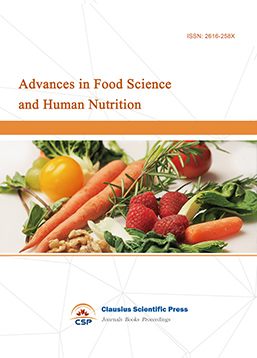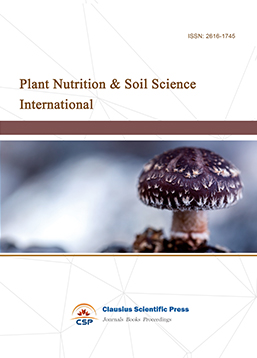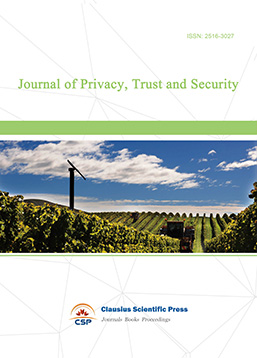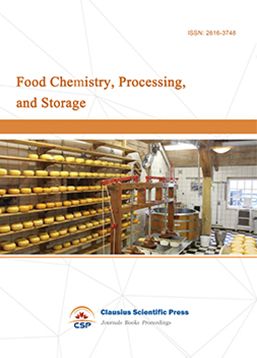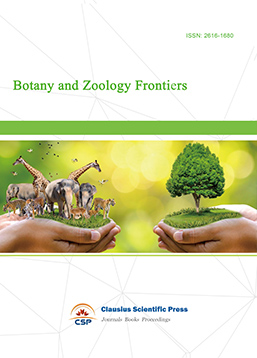Application of Stable Carbon Isotope to Water Use Efficiency of Karst Plants
DOI: 10.23977/jmcs.2024.030103 | Downloads: 2 | Views: 88
Author(s)
Rong Zhou 1, Ziqi Liu 1
Affiliation(s)
1 Karst Research Institute, Guizhou Normal University, Guiyang, 550000, China
Corresponding Author
Ziqi LiuABSTRACT
In the management of karst desertification, water is the limiting factor for plant life. Plant water use efficiency (WUE) reflects the relationship between plant water consumption and dry matter production, serving as an objective evaluation index of drought-resistant characteristics of water use status. This index indicates the ecological drought sensitivity and adaptability of plants when subjected to drought stress. Stable carbon isotope technology is a valuable tool for evaluating water use efficiency (WUE) in plants. This paper provides an overview of the application of stable carbon isotopes in assessing plant WUE. It also examines the impact of environmental water status, CO2 concentration, and light on plant WUE. The findings can serve as a theoretical reference for the restoration of vegetation in karst desertification management ecosystems.
KEYWORDS
Stable carbon isotopes, Water use efficiency, Karst desertificationCITE THIS PAPER
Rong Zhou, Ziqi Liu, Application of Stable Carbon Isotope to Water Use Efficiency of Karst Plants. Journal of Modern Crop Science (2024) Vol. 3: 18-24. DOI: http://dx.doi.org/10.23977/jmcs.2024.030103.
REFERENCES
[1] Zhang S, Liu Y, Li G, et al. Application of stable carbon isotope to research on water use efficiency of forest plant [J]. World Forestry Research, 2013, 26(03): 39-45.
[2] Liu X, Su X, Jiang T, et al. Assessment of ecological drought sensitivity based on water use efficiency[J]. Journal of Northwest A&F University (Natural Science Edition), 2023, 51(06): 81-90.
[3] Zhen S, Shang-Guan Z. Stable carbon isotope composition and global variation in terrestrial plants[J]. Chinese Journal of Applied Ecology, 2006, (04): 4733-4739.
[4] Cao S, Feng Q, Si J, et al. Review on research methods of plant water use efficiency [J]. Journal of Desert Research, 2009, 29(05): 853-858.
[5] Wang Q, Yu D, Dai L, et al. Research progress of plant water use efficiency under global climate change[J]. Chinese Journal of Applied Ecology, 2010, 21(12): 3255-3265.
[6] Shi R, Zhang Q, Li M, et al. Application of plant carbon isotope fractionation in the study of water use efficiency[J]. Chinese Agricultural Science Bulletin, 2022, 38(23): 15-20.
[7] Kramer PJ. Water relations of plants[M]. New York: Academic Press, 1983: 405-409.
[8] Farquhar GD, O’Leary MH, Berry JA. On the relationship between carbon isotope discrimination and intercellular carbon dioxide concentration in leaves[J]. Australian Journal of Plant Physiology, 1982, 9: 121-137.
[9] Singh B, Hazarika U, Srivastava S. Effect of irrigation based on physiological stages on growth, yield and water-use efficiency of wheat[J]. Indian Journal of Agricultural Sciences (India), 1984.
[10] Chen Y, Hu J, Li Y, et al. Application of stable carbon isotope techniques to research into water stress[J]. Acta Ecologica Sinica, 2004, (05): 1027-1033.
[11] Li H, Wu Y, Wu Y. Photosynthetic characteristics of conformation tree and mulberry in karst exposed rock habitat [J]. Carsologica Sinica, 2021, 40(03): 487-494.
[12] Lin G. Stable isotope ecology [M]. Beijing: Higher Education Press. 2013: 125-153.
[13] Lei S, He C, Zhang J, et al. A review of the application of stable carbon isotope to ecosystem research[J]. Journal of Isotopes, 2020, 33(01): 53-66.
[14] Farmer J, Baxter M. Atmospheric carbon dioxide levels as indicated by the stable isotope record in wood[J]. Nature, 1974, 247(5439): 273-275.
[15] Bender M. Variation in the 13C/12C ratios of plants in relation to the pathway of photosynthetic carbon dioxide fixation [J]. Phytochemistry, 1971, 10: 1239-1244.
[16] Rosenberg N. Microclimate: the biological environment[J]. New York: John Wiley & Sons Press, 1974.
[17] Liu H, Li J. Application of stable isotope carbon in studies of plant water use efficiency[J]. Journal of Northwest Forestry University, 2008, (01): 54-58.
[18] Donovan L, Dudley S, Rosenthal D, et al. Phenotypic selection on leaf water use efficiency and related ecophysiological traits for natural populations of desert sunflowers[J]. Oecologia, 2007, 152: 13-25.
[19] Ogaya R, Penuelas J. Comparative field study of quercus ilex and phillyrea latifolia: photosynthetic response to experimental drought conditions [J]. Environmental and Experimental Botany, 2003, 50: 137-148.
[20] Cai H, Kang S, Zhang Z, et al. Study on the appropriate time and degree of regulated deficit irrigation[J]. Transactions of the Chinese Society of Agricultural Engineering, 2000, (03): 24-27.
[21] Jiang Y, Han X, Shi Y, et al. Research on the water use efficiency of 8 different varieties of medicago sativa L[J]. Modern Agriculture Research, 2023, 29(11): 39-44.
[22] Chen T, Yang M, Feng H, et al. Spatial characteristics of carbon isotope composition in plant leaves in northern Plateau [J]. Journal of Glaciology and Geocryology, 2003, (01): 83-87.
[23] Akhter J, Mahmood K, Tasneem MA, et al. Comparative water use efficiency of Sporobolus arabicus and Leptochloa fusca and its relation with carbon isotope discrimination under semiarid conditions[J]. Plant and Soil, 2003, 249(2): 263-269.
[24] Zhen Y, Liu C, Zhao H, et al. Response characteristics of photosynthetic physiological parameters of prunus davidiana leaf to poil moisture[J]. Journal of Shandong Forestry Science and Technology, 2023, 53(05): 28-35+40.
[25] Jiang G, Dong M. A comparative study on photosynthesis and water use efficiency between clonal and non-clonal plant species along the northeast China transect(NECT)[J]. Chinese Bulletin of Botany, 2000, (08): 855-863.
[26] Gago J, Douthe C, Florez-Sarasal I, et al. Opportunities for improving leaf water use efficiency under climate change conditions[J]. Plant Science, 2014, 226: 108-119.
[27] Ito A, Inatomi M. Water-use efficiency of the terrestrial biosphere: a model analysis focusing on interactions between the Global Carbon and Water Cycles[J]. Journal of Hydrometeorology, 2012, 13(02): 681-694.
[28] Feng X, Epstein S. Carbon isotopes of trees from arid environments and implications for reconstructing atmospheric acta[J]. Geochimica Et Cosmochimica Acta, 1995, 59: 2599-2608.
[29] Rezaie N, D’Andrea E, Braeuning A, et al. Do atmospheric CO2 concentration increase, climate and forest management affect iWUE of common beech? Evidences from carbon isotope analyses in tree rings[J]. Tree Physiology, 2018, 38(8): 1110-1126.
[30] Liu L. Effects of elevated atmospheric [CO2] and temperature on water use efficiency of maize[D]. Hebei University of Engineering, 2023.
[31] Li J, Wang S, Li Y, et al. Effects of elevated CO2 concentration on cell structure and stress resistance physiology of Setaria italica under drought stress[J]. Chinese Journal of Applied Ecology, 2000, (06): 881-884.
[32] Chen X, Wu D, Wang G, et al. Effect of elevated CO2 concentration on photosynthesis and antioxidative enzyme activities of wheat plant grown under drought condition[J]. Chinese Journal of Applied Ecology, 2000, (06): 881-884.
[33] Rao M, Hale B, Ormrod D. Amelioration of ozone-induced oxidative damage in wheat plants grown under high carbon dioxide: Role of antioxidant enzymes[J]. Plant Physiology, 1995: 421-432.
[34] Duan S, Zhang C, Guo F, et al. Effect of Environmental Factors on Stable Carbon Isotopic Composition of Plants and Application in Water Use Efficiency[J]. Journal of Isotopes, 2008, (01): 46-53.
[35] Deng X, Shi Z, Zeng L, et al. Effects of drought and shading on instantaneous water use efficiency and δ13C of Pinus massoniana seedlings[J]. Chinese Journal of Ecology, 2024, 43(01): 140-145.
[36] Lin Z, Lin G, Kong G, et al. Effect of growth irradiance on stable carbon isotope ratio, intercellular CO2 concentration and water-use efficiency of two woody plant in subtropical natural forest[J]. Journal of Tropical and Subtropical Botany, 1995, (02): 77-82.
[37] Meng F, Jin N, Wang Z. Effects of light and water on alfalfa growth and water use[J]. Pratacultural Science, 2023, 40(08): 2121-2128.
[38] Long M, Wu Z, Gao J, et al. Analysis of influencing factors of light energy and leaf water use efficiency of alfalfa [J]. Pratacultural Science, 2009, 26(11): 73-77.
| Downloads: | 248 |
|---|---|
| Visits: | 13308 |

 Download as PDF
Download as PDF